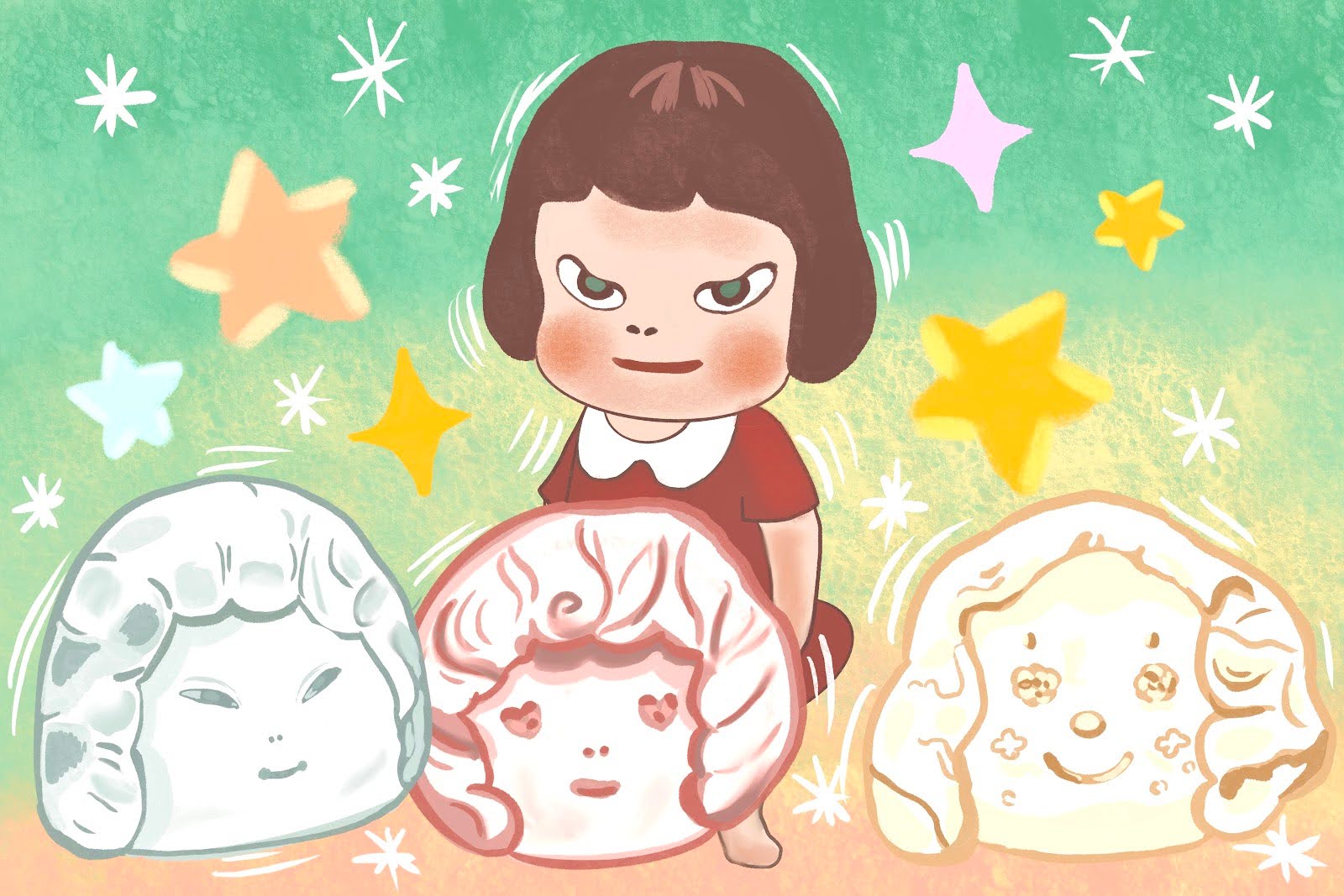Yoshitomo Nara’s current exhibition at the Orange County Museum of Art, “I Don’t Want to Grow Up,” captures the bittersweetness in coming of age through a series of three bronze sculptures: “Smiling,” “Slender Eyes” and “Basket Package.” The exhibition opened on May 28 and will remain on view through Dec. 28.
The artist renders emotional depth into his most iconic characters — girls with wide, somber eyes, with a defiant undertone and knitted eyebrows on their round, child-like faces. Beneath the surface of the unyielding bronze, “Smiling,” “Slender Eyes” and “Basket Package” appear tenderly shaped, covered in subtle bumps and clumsy fingerprint marks — as if Nara had molded them from clay with his bare hands.
The matte texture of the sculptures further enhances a dream-like quality that alludes to the uncertainty of adolescence, blurring the lines between innocence and knowingness.
Each sculpture is placed individually on its own pedestal as a symbol of solitude and encounter with the inner self. At the same time, they appear to be standing together as a group, which simultaneously underscores the concept of connection and fellowship. This duality emphasizes how both individuality and community are indispensable factors that form one’s identity.
They endure the blazing sun and gusting wind in the museum’s outdoor setting, embracing their surrounding environment in full immersion –– experiencing the world by becoming a part of it. In this space, they transcend their loneliness, collectively weathering the phase of metamorphosis as standing testaments.
Nara channels the memories of his own childhood into these contrary figures, which enables him to evoke the ethos of propinquity, melancholy and nostalgia in the viewers. He highlights the discharge of regression that resonates across generations, infusing a universal theme throughout his work.
Born in 1959, Nara grew up in rural northern Japan in the aftermath of World War II. Loneliness was a perpetual theme that marked his childhood. During the period of rapid socioeconomic upheavals, Nara’s parents worked demanding jobs like most adults in post-war Japan. Because of their frequent absence, Nara’s sensitive and introverted self turned to his imagination. This was reinforced by the emergence of cartoon television series like Astro Boy, Gigantor and Speed Racer.
Later in his youth, art became an outlet for his vast imagination, which eventually prompted him to earn his Bachelor’s of Fine Arts and his master of Fine Arts at the Aichi University of Fine Arts and Music in Nagoya, Japan. Nara then left for Germany to continue his study of art at the Kunstakademie Düsseldorf, also known as the German State Academy of Arts. After graduating, he set up a studio in Köln and began to refine his skills as well as discover his own vision and distinctive style for art.
From Superflat and Pop Art to Ukiyo-e Japanese Woodblock Prints and Japonisme, Nara is often associated with a variety of movements and styles as a renowned figure within contemporary Japanese art. Despite this, Nara does not consider himself confined to any specific artistic canons or movements.
Nara’s depiction of his signature characters deviates from the conventional aesthetic of traditional kawaii — the Japanese word for cuteness — by instead embodying emotional struggles through the rebellious frown and the threatening gaze. While the Japanese concept of cuteness typically refers to empathy towards small or vulnerable creatures, it feels inapplicable when used to describe the girls despite their adorable forms. Some characters are smoking cigarettes, wielding tiny knives, bearing signs of injury or even cursing –– manifesting a sense of resentment and restrained anger that contrasts strictly with their infantile appearance. Their doe-eyes are constantly evaluating their surroundings, actively interpreting the world through the critical lenses of childhood and questioning social issues at their core.
Nara’s distinctive art style is also reflected in “I Don’t Want to Grow Up.” “Slender Eyes” greets viewers with her slanted, crescent eyes and a shy smile. Her facial expression is faint, but unmistakably confrontational. The narrowed eyes certainly amplify her enigmatic presence and quiet suspicion. “Smiling” is characterized by her cratered eyes, button nose and dented blush that are unevenly shaped on her dimpled cheeks. Her mischievous smile radiates an impression of playfulness and youthful exuberance. “Basket Package” can be easily recognized by her seemingly heart-shaped eyes and the short, curly hair that frames her face. Despite her whimsical features, her expression conveys indifference and careful introspection.
Although Nara’s illustrations and sculptures present a cartoonish imagery of children, the messages they express are far from feeble or one-dimensional. His work draws on a wide spectrum of influences, from Western Punk Rock, fairy tales and renaissance paintings to even Eastern religion and philosophy. Nara would also visit Syrian refugee camps and participate in anti-war activities, seeking inspiration for his art by exploring further afield and directly engaging with society to enrich his artistic narrative.
Now through Dec. 28, “Smiling” “Slender Eyes” and “Basket Package” can be found on the Orange County Museum of Art’s outdoor sculpture terrace, inviting viewers to visit the world of imagination sculpted by Yoshitomo Nara.
Eva Jia is an Arts & Entertainment Intern for the fall 2025 quarter. She can be reached at jiae1@uci.edu.
Edited by Corinna Chin and Joshua Gonzales


